Every company moves through different growth phases, and eventually, the focus, strategy, and motions for growth must change alongside the business. Dave McJannet, CEO of HashiCorp, shares from his wealth of experience to reveal the secrets to building and expanding SaaS companies the right way.
The Three Elements of Company Building
Many founders think first of their product and then the market. But according to McJannet, it’s actually better to begin with the market. He goes on to lay out the three elements of building successful companies.
-
- Pick the Market: Choose your target audience, and create a product they need.
- Find the People: Find the team that is equipped to help you build your product, sell it, and run company operations.
- Build the System: Create your execution strategy with repeatable processes designed to scale your business.
Starting with the market is a critical first piece because it focuses more on the user and avoids an inward view that a product-first focus can sometimes support. “Picking the market is actually what we do, not building products. Ultimately, your products will be delivered behind that mission of the market you want to enter, but you are picking a market –– that’s the most important thing.”
Once you have chosen your market and found the team to build and sell the product, you need to create systems that grow with you. McJannet shared five rules of system-building that drive company growth.
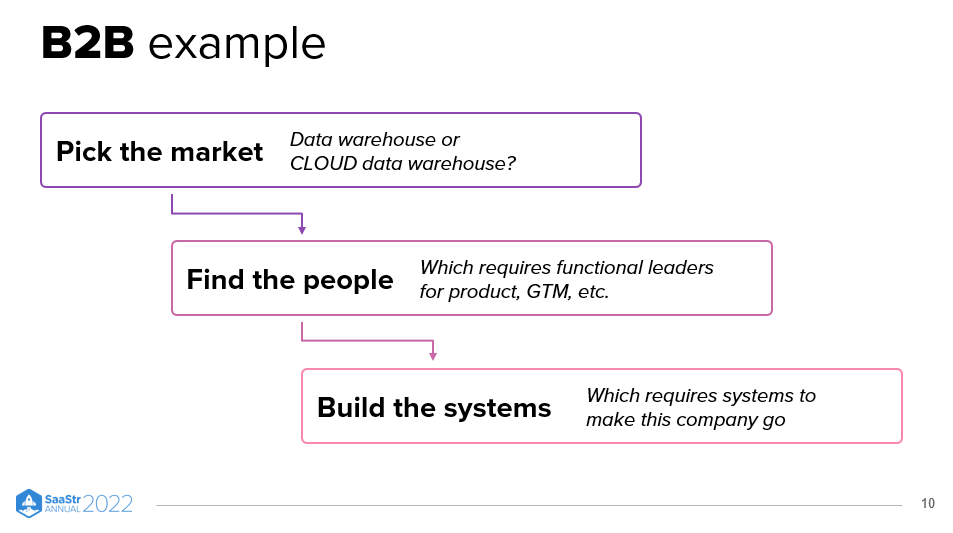
Rule #1: The Phase Shifts of Growth Companies
There is plenty of advice for startup founders out there, which certainly can help leaders grow their companies. Yet, founders must be aware of company phases before taking advice –– the wisdom might not be suitable for their growth phase.
McJannet shares the growth models that have repeated throughout the companies he has worked with, and he believes that most tech companies can use these phases for reference. However, he notes that the dollar amounts can differ from business to business.
- Phase 1: $0 – $10M. Pattern Matching
This is the discovery phase to gather information, experiment, and identify patterns. - Phase 2: $30M. Product-Market Fit
Don’t rush your product-market fit too early. Be sure your PMF is backed up by your data, feedback, and experiments from phase one. - Phase 3: $100M. Repeatability
Start examining what works and create the repeatable systems that drive results. - Phase 4: $250M. Early Scale
Begin expanding your systems to scale. - Phase 5: $500M. Mid-Scale
Create more scaling systems to grow even more. - Phase 6: $1B+.
Scale and diversify your product portfolio.
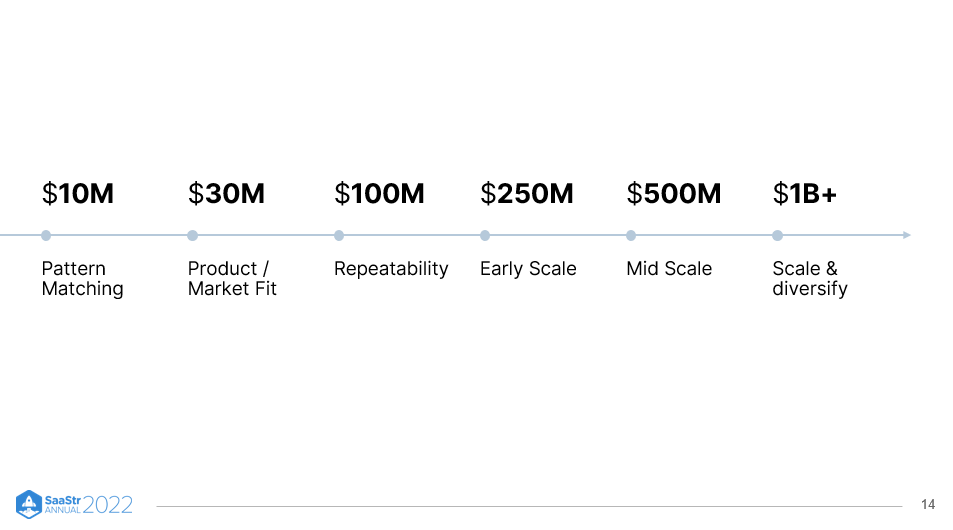
Rule #2: A Framework for Systems
As a business grows, it needs processes and systems to function optimally. The plans you create will take you from your goals to your outcomes. Think of your systems as the bridge between your business objectives and your results, and you can repeat the cycle between the system and your desired outcomes. This is what your framework for systems looks like:
Goals → System → ↲Outcomes
McJannet says, “If you pick the right market, then with good execution, you have the opportunity to build the systems to make that company successful.”
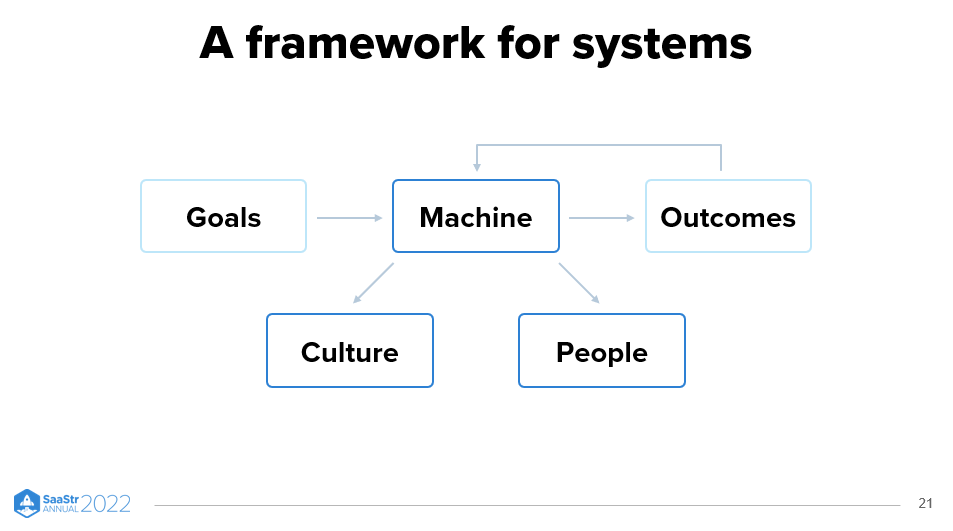
Rule #3: A Company is Comprised of Four Core Plans
There are four main plans that a successful business requires to run effectively.
- Financial Plan: How much cash coming in, and how much are we spending? How fast?
- People Plan: How many people do we need on our team? Who should we hire?
- Product Plan: How much can we build? What should we build?
- GTM Plan: How do we get users on the journey with us?
These four plans fit together and feed each other like a cycle, yet each area needs different processes and strategies.
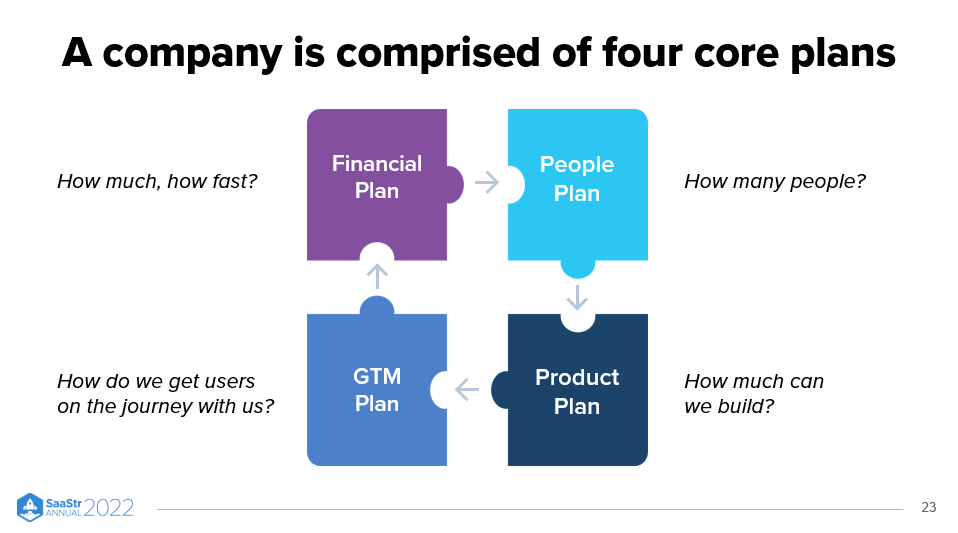
Rule #4: The Core Plans are Achieved Through Systems
To ensure the four core areas serve the business, they each need their own collection of systems that weave and interlock with each other.
Your leadership team will focus on creating these systems with the goal-system-outcome framework, but it’s essential that as the company grows, the systems shift as well.
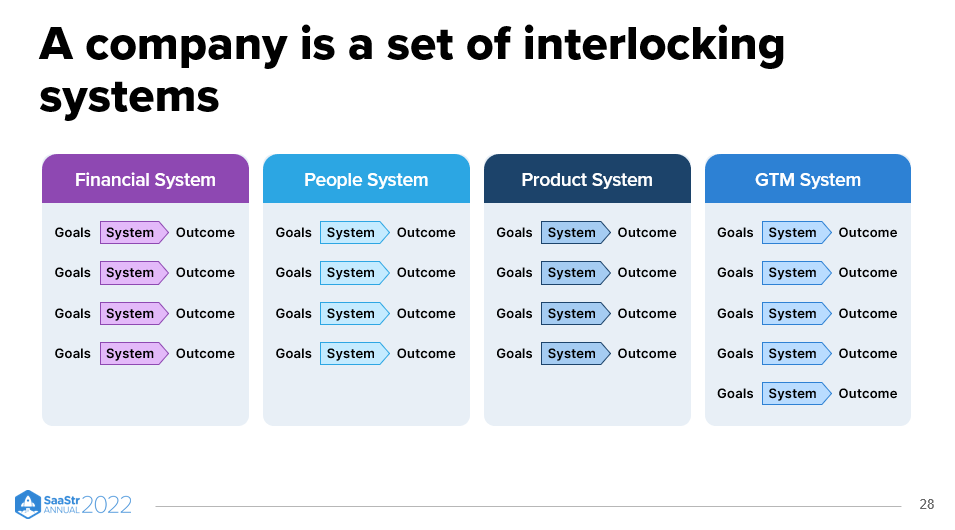
Rule #5: Time Horizons and System Design
Finally, the secret ingredient for every business is to understand how far ahead to prepare. This roadmap looks different for each role in the company, but the CEO should be examining the furthest ahead.
CEO: 36-month horizon
Leadership Team: 18-month horizon
Managers: 12-month horizon
Individual Contributors: 6-month horizon.
And choosing your leadership team is critical for a CEO because your leadership will spearhead the charge for when your systems change with the company phase. McJannet says, “The ideal person for your leadership team is someone who’s both seen startups but has also seen scale, and they know how to get there.”
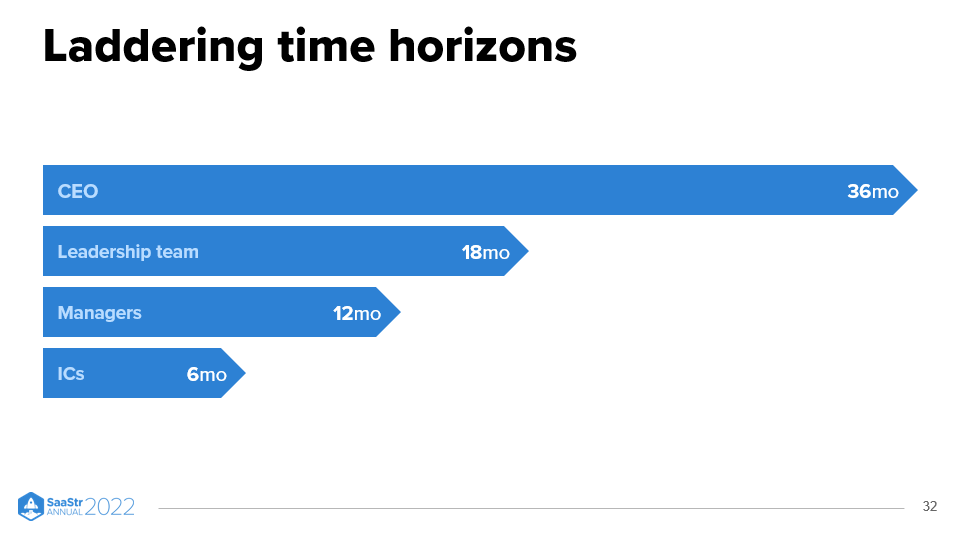
Key Takeaways
- Pick the market. Find the people. Build the systems.
- Keep company phase shifts in mind.
- Visualize your interlocking systems. People come and go, but strong systems endure.

